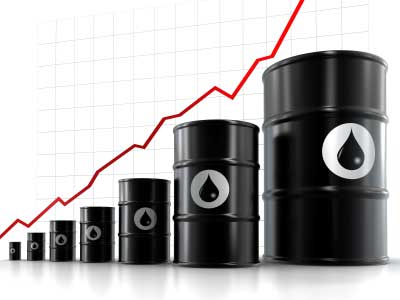The big story
Natural gas prices in the United States have plummeted in the past decade from $12.69/mm BTU in June 2008 to $2.85/mm BTU. Crude oil prices have suffered a similar fall, plunging from $105 in July 2014 to as low as $43 in 2015. Once a boom story embodying the American Dream, oil and gas frackers are suffering a downturn in the commodity cycle as natural gas and crude oil supplies rise. OPEC refuses to cut production and US companies have been forced to curtail drilling as a result. Furthermore, sanctions against Iran will be lifted, bringing an additional 800k bpd to the global market. Finally, the Federal Reserve is poised to increase interest rates which will increase the cost of debt but also make the dividends of MLPs less appealing.
The Linn Energy story
Linn Energy (NASDAQ: LINE) is an archetype of the distressed oil and gas story. The stock has fallen from over $40 in 2012 to under $8. In 2013, the company acquired Berry Petroleum to shift its asset base from lagging natural gas fields to lucrative petroleum fields. Unfortunately, the company’s enjoyment of the strong crude market was short-lived.
LINE is organized as an LLC and passes a significant portion of its income to equity investors. As a result, the stock yields a very high dividend, currently at 15.53%. However, the company actually has no income, reporting a $451.8 million loss in 2014. At the same time, the company relies heavily on cash to drill new wells to maintain and grow production. In 2014, the company spent $1.64 billion on capex and $2.48 billion on acquiring new properties. With the downturn in oil prices, LINE has cut its $0.2416 per month dividend to $0.10 per month.
In light of falling oil prices, the firm struck a deal with GSO to finance future growth. GSO will commit up to $500 with 5-year availability to fully fund drilling projects on locations determined by LINE. GSO receives 85% of the working interest in the projects up to 15% IRR, at which LINE then receives 95% of the working interest. LINE has completed a number of property exchanges with XOM and raised additional cash by selling significant holdings of the Midland Basin. However, these actions may only be buying time against the inevitable if oil markets do not recover.
Although the company’s stock has fallen significantly, it still represents a $3.28 billion market cap. As the company continues to bleed cash and the macro picture for oil worsens, LINE will likely have to cut its dividend again. The company is highly reliant on debt capital markets. At the end of CY2015Q1, LINE had $10.4 billion of long-term liabilities and only $48.3 million of cash. The dividend costs $35.5 million per month and the high yield market has become tepid toward oil E&P issues. Furthermore, a rising interest rate environment is coming, which will further increase LINE’s cost of capital. If investor appetite for oil-related debt falters, LINE may be a candidate for debt restructuring. In this scenario, there is still room for significant downside for the equity.
Related:

Linn Energy (LINE)
10/12/15: Long Thesis on Distressed Debt

Crude Oil Chart
Compare oil prices to supply & demand

Crude Oil
7/30/15: Crude Oil Market Analysis